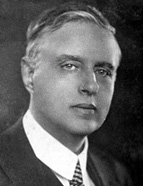

His collaboration in the press was wide-ranging and long-lasting, especially the ones for the following publications Jornal do Comércio [Journal of Commerce] (São Paulo and Rio de Janeiro), Revista do Brasil [Brazil Magazine], Digesto Econômico [Economic Digest], Revista do Arquivo Municipal [Municipal Archive Magazine] (São Paulo), Revista Numismática [Numismatic Magazine], Revista do Instituto do Café [Coffee Institute Magazine], Revista da Academia Paulista de Letras [Journal of the São Paulo Academy of Letters], Revista da Academia Brasileira de Letras [Journal of the Brazilian Academy of Letters], Revista do Instituto Histórico e Geográfico Brasileiro [Journal of the Brazilian Historical and Geographical Institute], Revista do Instituto Histórico e Geográfico de São Paulo [Journal of the Historical and Geographical Institute of São Paulo] and, above all, the Revista do Museu Paulista [Magazine of the São Paulo Museum]and in the platform he created for the publication of historical studies and documents, the Anais do Museu Paulista [Annals of the São Paulo Museum] .
This periodical was created as part of the celebrations for the centenary of Brazilian independence in 1922. Appointed director of the Museu Paulista [São Paulo Museum] in 1917, Taunay assumed leadership of a museum that had already established itself as a national and international reference in various branches of the natural sciences and transformed it into a history museum dedicated to the Bandeirantes' [flag-carriers] epic. His mission was to prepare that space that featured a whale skeleton in the hall and a Pedro Américo painting "Independência ou Morte!" [Independence or Death!], painted between 1886 and 1888, in the Hall of Honour into a museum capable of telling the story of a territory colonised by the Portuguese that became an independent country in 1822. With a sharp museological vision, Taunay oversaw the complete remodelling of the Museu Paulista . By assembling visual documents, particularly colonial cartography, alongside textual records, and using this material to guide painters and sculptors with whom he corresponded daily, Taunay crafted scenes that narrated what he termed the "conquest of Brazil by Brazilians". He investigated the role of the "sertanistas" [specialists in the study of the physical and/or human geography of the hinterland] of the Captaincy of São Paulo in the exploration and occupation of Brazilian territory, focusing particularly on various aspects of daily life in São Paulo's history. In doing so, he found the Museu Paulista to be an ideal setting for locating and publishing documents that contributed to the creation of a São Paulo iconography in the colonial period. He remained in this position until 1945 and became one of the leading historians of his time, being elected to the São Paulo Academy of Letters and to the Brazilian Academy of Letters in 1929. In 1934, he inaugurated the Chair of the History of Brazilian Civilisation in the History and Geography course at the Faculty of Philosophy, Sciences, and Letters of the now-renowned University of São Paulo. Such prominence earned him the nomination and election as an honorary member, on 27 December 1944, of the prestigious American Historical Association alongside Johan Huizinga, Rafael Altamira y Crevea, Pierre Caronm, Albert Pollard, Georg Macauley Trevelyan, and Domingo Amnátegüi y Solar.
This work is financed by national funds through FCT - Foundation for Science and Technology, I.P, in the scope of the projects UIDB/04311/2020 and UIDP/04311/2020.
